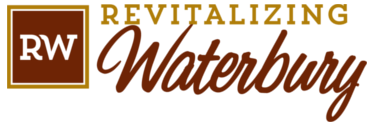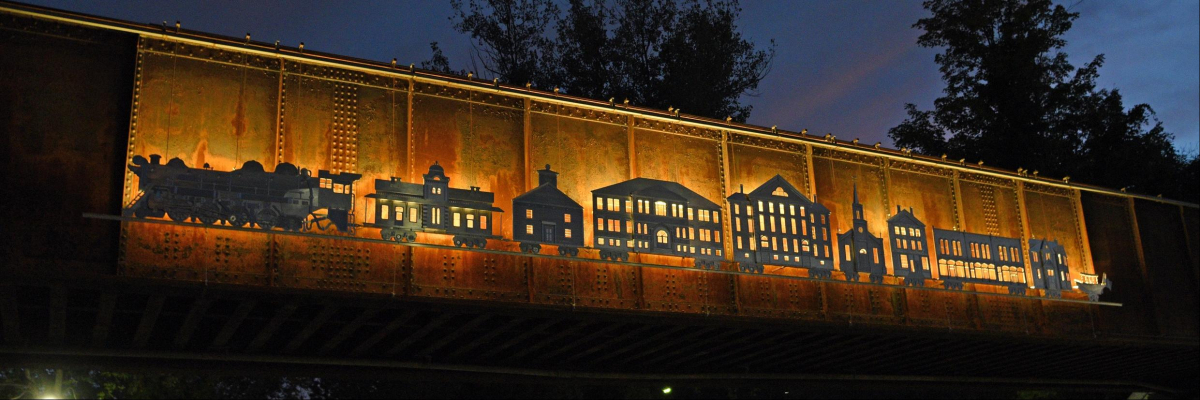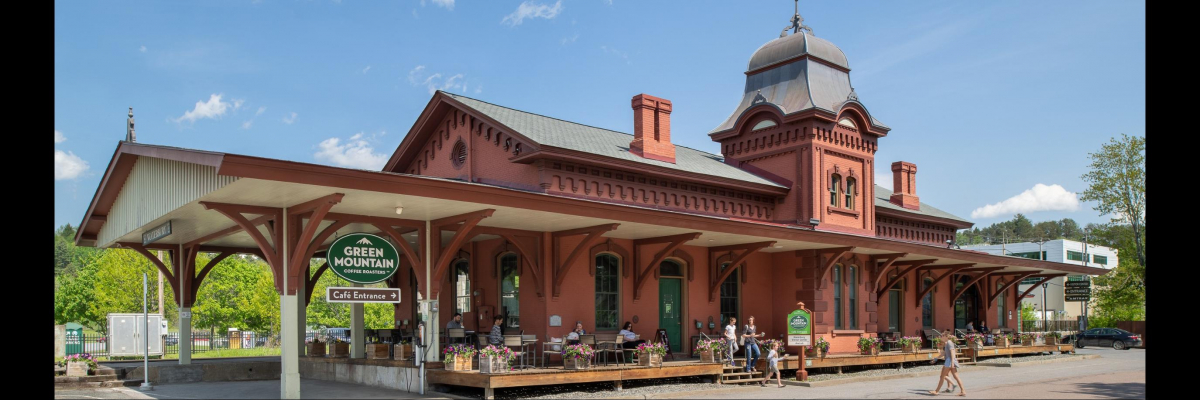OUR HISTORY AND ACCOMPLISHMENTS
Organizational History
RW was founded in 1991 by a handful of Waterbury citizens committed to restoring the historic Stimson and Graves block, located at the corner of Main and Stowe Streets. For the first 17 years of operation, it was an all-volunteer organization and today still depends heavily on the volunteer service of our community members. In 2006, RW played a lead role in Waterbury’s successful application to become Vermont’s 22nd Designated Downtown, thus allowing property and business owners and the Town & Village of Waterbury to take advantage of special tax credit and grant opportunities. Following downtown designation, RW’s work broadened beyond bricks and mortar projects to a more holistic approach to revitalization that includes strengthening the local economy, encouraging physical improvements, and developing special events and promotional programs.
After Tropical Storm Irene in 2011, ReBuild Waterbury formed as a unique project of RW with the mission of assisting individuals and families in the area in need of assistance to rebuild their homes from the disastrous effects of the storm. ReBuild Waterbury achieved its fundraising goal of just under $1,000,000, and coordinated a stunning 14,000+ volunteer hours from November 2011 to April 2013. The project emerged as a leader and model for other recovery efforts around Vermont.
In 2015, RW hired an economic development director whose purpose is to encourage and support sustainable and responsible economic growth in Waterbury. In 2017, RW merged with the Waterbury Tourism Council bringing all promotional activities under one umbrella.
Stimson and Graves Historic Restoration Project
Two dilapidated downtown buildings dodged the wrecking ball when RW formed in 1991 to renovate the historic Stimson and Graves Building. The movement to restore the building and revitalize the downtown was dubbed "Miracles Happen." Located at the very center of Waterbury Village, at the corner of Main and Stowe Streets, the two cavernous, three-story buildings had been vacant for more than 12 years until RW purchased the buildings for $196,300 and set out to create affordable rental housing in the heart of downtown.
Partnering with Burlington-based Housing Vermont, Inc., a statewide nonprofit that works with communities and the private sector, renovations began in 1991 and ended in 1994. The project exemplified RW members’ vision for the downtown and a vision for Stimson and Graves as an anchor facility that could become a focal point of the community and provide an identity, a sense of place, and a visual community center for our town. RW’s share of building ownership was transferred to Central Vermont Community Land Trust in 2010, and the space currently houses the Waterbury Area Senior Center (link to wasca.org), retail space, and 12 affordable apartments.
Waterbury Railroad Station Restoration
The Central Vermont Railroad Station sits in the center of Waterbury Village, at the head of Rusty Parker Memorial Park. Built in 1875, the station was the centerpiece of the downtown through the first half of the 20th century but had deteriorated over the ensuing years. The interior had been totally reconfigured, losing all of its Italianate Victorian architectural detailing and ornamentation.
RW began planning the restoration of the station in 1997. Major grant support came from the Great American Station Foundation, the Vermont Agency of Transportation, and Green Mountain Coffee Roasters Foundation. A capital fundraising campaign was established and successfully met the goal of $1,200,000 through donations from the private sector and community members.
Keurig Green Mountain, Inc. agreed to lease the station from RW, and created a Visitor Center and Café that has become a first-class attraction and provided an economic boost to the downtown. Thousands of visitors from around the world have passed through the doors since it opened in October 2006.
The project was conceived to serve local citizens and travelers to the Waterbury region by providing a focal point for the downtown historic district; a transfer point to Amtrak (link to Amtrak) and bus service; and as a gateway to Pilgrim Park, Waterbury’s leading business district, the home of Keurig Green Mountain's brewing and manufacturing operations. The Waterbury Railroad Station restoration project is an example of successful collaboration among the nonprofit, governmental and business sectors.
Tropical Storm Irene Flood and Long Term Community Recovery
On August 28 and 29, 2011, fed by nearly a foot of rainfall in less than 24 hours, the Winooski River overran its banks. Given the positioning of Waterbury’s historic village alongside the Winooski River, the flooding was pervasive. Over 220 residential, municipal and commercial buildings along Waterbury’s Main Street corridor sustained significant damage, and over 1000 State of Vermont employees were displaced after the near-total destruction of the Waterbury State Office Complex.
ReBuild Waterbury formed as a unique project of RW with the mission of assisting individuals and families in the 05676 zip code area in need of assistance to rebuild their homes from the disastrous effects of Tropical Storm Irene. ReBuild Waterbury achieved its fundraising goal of just under $1,000,000, and tracked a stunning 10,000+ volunteer hours from November 2011 to January 2013. The project emerged as a leader and model for other recovery efforts around the state.
RW established the Business Flood Relief Fund in response to the serious damage to area businesses caused by Irene-related flooding. The application process was designed to allow RW to distribute the funds as expeditiously as possible, and to provide support to all qualified applicants. A total of $92,000 from the Fund was disbursed to 33 local businesses. These grants were made possible by generous contributions to the Fund from Keurig Green Mountain, National Life Group Charitable Foundation, the John and Barbara McLendon Foundation, Rise Up! Waterbury, Larkin Realty, Union Mutual Fire Insurance Company, along with a strong outpouring of support from individuals and businesses.
With the assistance of the Federal Emergency Management Agency’s Long Term Community Recovery (LTCR) Team, Waterbury worked diligently through a seven-month process to identify the initiatives necessary to rebuild the community at every level. The process included a Waterbury Community Recovery Fair on February 16, 2012, and a gathering of potential funding partners in attendance at the LTCR Plan unveiling in May 2012.
RECENT ACCOMPLISHMENTS
Waterbury Train Station Community Room refresh
Revitalizing Waterbury partnered with the Waterbury Historical Society to refresh the community gathering space located at the Waterbury Train Station. The Community Room is used as a waiting room for Amtrak passengers, provides a second entrance to the Green Mountain Coffee Cafe and Visitors Center and provides tourist information to visitors. Volunteer RW Community Ambassadors staff the space during high traffic times of the year. Over 200,000 people visit the Waterbury Train Station annually from across the globe. The Refresh was completed in May 2018 and features artifact displays, vintage décor, and new signage, celebrating the Train Station as a symbol of the thriving businesses and tourism that have shaped Waterbury for generations.
WATERBURY RAIL ART PROJECT: THE WATERBURY SPECIAL
Revitalizing Waterbury, the Waterbury Rotary Club and the Sons of the American Legion, in conjunction with the town of Waterbury and the Vermont Arts Council, commissioned a work of art for the railroad bridge at the entrance of Waterbury Village. Installed in September 2018, “The Waterbury Special” is a low relief aluminum sculpture created by Randolph artist Phillip Godenschwager. Mr. Godenschwager rendered nine historic buildings in the town of Waterbury as train cars. The train cars are pulled by a locomotive steam engine inspired by a drawing of the late Merrill Bennett – a locally know patient of the former Waterbury Asylum.
This permanent public art piece is installed on the 100+ foot long railroad bridge at the roundabout in Waterbury. It is the first piece of art ever to be installed on a New England Central Railroad working railroad bridge.
This project is an incredible example of multiple organizations working with the community towards a common goal: enhance the lives of our community through art and collaboration. The members of Revitalizing Waterbury, the Rotary Club of Waterbury, the American Legion Post 59, the Vermont Arts Council, the New England Central Railroad, the Town of Waterbury and its community now have a physical reminder of not only the architectural history of Waterbury but the immense effort and fortitude of those willing to spend time and effort for the enrichment of their communities.


